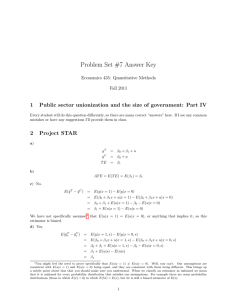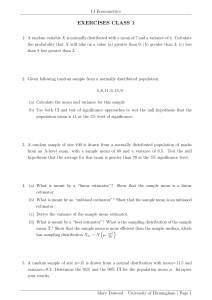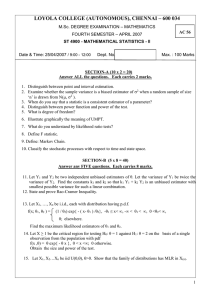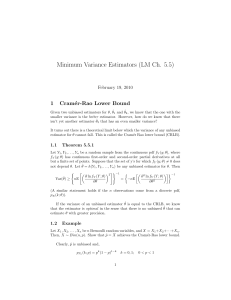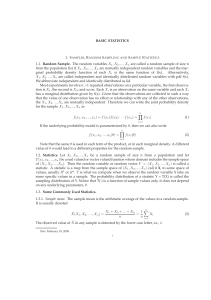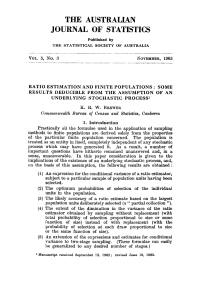( )2 ∑ ( )2 ∑ ( )2 ( ∫ µ ( ( ( ) ( ) ( ) ( ) ( ∑n
advertisement
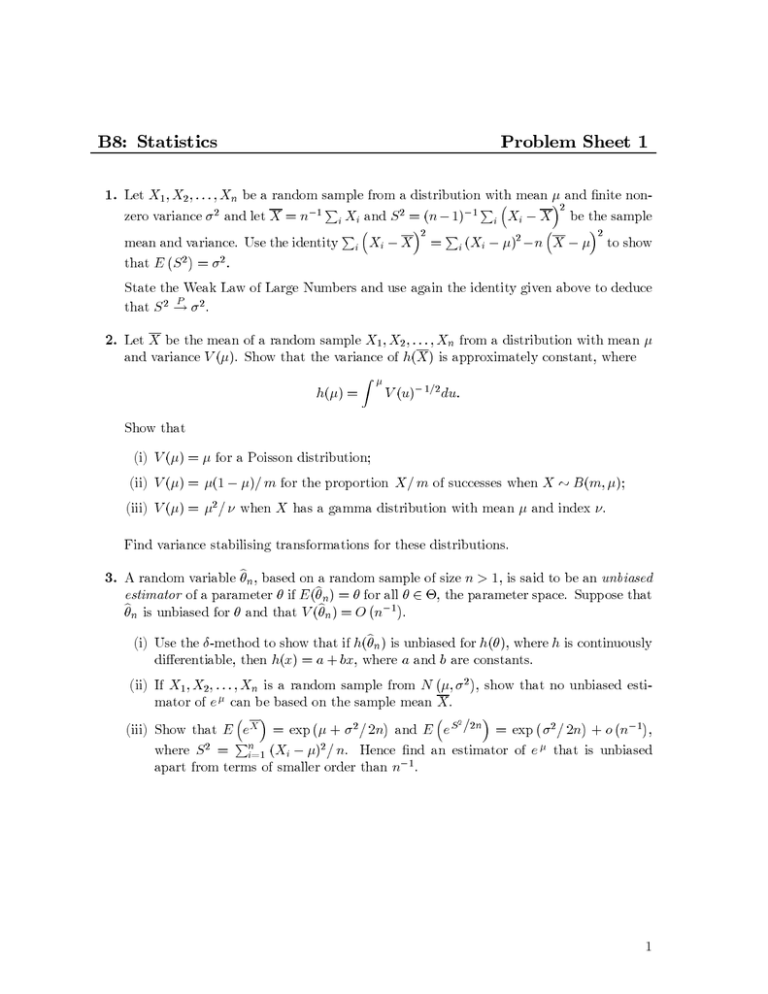
B8: Statistics 1. Problem Sheet 1 Let X1 , X2 , . . . , X be a random sample from a distribution with mean µ and finite non 2 zero variance σ 2 and let X = n−1 X and S 2 = (n − 1)−1 X − X be the sample X − X 2 = (X − µ)2 − n X − µ2 to show mean and variance. Use the identity that E S 2 = σ2 . State the Weak Law of Large Numbers and use again the identity given above to deduce that S 2 → σ2 . n i i i i i i i i P 2. Let X be the mean of a random sample X1 , X2 , . . . , X from a distribution with mean µ and variance V (µ). Show that the variance of h(X ) is approximately constant, where n h(µ) = µ V (u)− 1/2du. Show that (i) V (µ) = µ for a Poisson distribution; (ii) V (µ) = µ(1 − µ)/ m for the proportion X / m of successes when X ∼ B (m, µ); (iii) V (µ) = µ2 ν when X has a gamma distribution with mean µ and index ν . Find variance stabilising transformations for these distributions. 3. A random variable θ , based on a random sample of size n > 1, is said to be an unbiased estimator of a parameter θ if E (θ ) = θ for θ is unbiased for θ and that V (θ ) = O n−all1θ. ∈ Θ, the parameter space. Suppose that n n n n (i) Use the δ -method to show that if h(θ ) is unbiased for h(θ), where h is continuously differentiable, then h(x) = a + bx, where a and b are constants. (ii) If X1 , X2, . . . , X is a random sample from N µ, σ 2 , show that no unbiased estimator of e can be based on the sample mean X . (iii) Show that E e = exp µ + σ 2 2n and E e /2 = exp σ2 2n + o n−1 , where S 2 = =1 (X − µ)2 n. Hence find an estimator of e that is unbiased apart from terms of smaller order than n−1 . n n µ S X n i i 2 n µ 1 4. Let X , X , .. . , X be a random sample from a uniform distribution on the interval θ − , θ + . Show that the joint density of the sample minimum and maximum, X 1 1 2 2 n 1 2 (1) and X( ) , is n (u, v) = n(n − 1)(v − u) − , θ − 12 < u < v < θ + 12 . The sample rangeis R = X − X , and a natural estimator of θ is the mid-range, T = X +X 2. Show that the conditional density of T given R is f (t|r; θ) = (1 − r)− , 0 < r < 1, θ − 12 + 2r < t < θ + 12 − 2r . f n n X(1) ,X( ) (n) (1) 2 (1) (n) 1 Calculate the mean and variance of T conditional on R. Discuss the adequacy of T given R as an estimator of θ when a) r → 0, b) r → 1. 2

